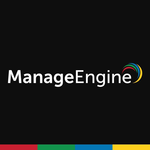What is most valuable?
The customer service portal allows customers to put in their ticket themselves, especially on the application side because sometimes you don't interpret it right when you're on the phone. So it's helpful to be able to to provide and collected that information from the user side.
We do a lot of applications, so we support a lot of applications. When a client or end user calls in, we have to consistently maintain the case number, the information, the client. It's a lot of details on different applications, so to be able to get that into their own terms is a lot easier for as we help troubleshoot the ticket.
How has it helped my organization?
The product itself gives you a lot. If you use it correctly and enter the information correctly in the fields, you can get a lot of data out of Service Desk, including trending information, to be able to help us troubleshoot what's going on. It also allows us to be able to determine trends in our issues and to manage those trends to train our end users.
You can always find a pattern with trending data. If you set it up correctly, you're going to find the patterns, and you're going to be able to resolve issues quicker and be able to improve on your services.
What needs improvement?
Reporting is not the easiest. We just purchase extraction features, but again, people need training. It wouldn't be so bad if you could get more information when you do a query within Service Desk and to be able to drop that information into an Excel spreadsheet.
Right now, you're limited to what is exported, and there's only a certain number of fields, but there's additional fields that I'd like. If I could just add those to export real quickly, it would be a lot easier than have to create a report each time.
What do I think about the stability of the solution?
We're pretty stable because when we came into it, we knew the number of end users we had. We might start growing it by doing more of our customer-based call center and by adding more of a case management system. That would increase it some, but right now, we've been pretty stable.
How are customer service and technical support?
Overall, we get pretty good response back from them. When we have issues, we bring it up with our TAM, Mandy McGee, but we also set up monthly meetings, so if we are having any issues, at least she can go and get the research done and get us a resolution right away. It's gotten a lot better than when we first had it, when you wouldn't get anything back. Now, it's a lot better than it was three years ago.
Which solution did I use previously and why did I switch?
We had Service Desk, and then we went to the cloud version. We tried to do it as SaaS, but then moved it back in-house. We went to the cloud, but some of the other products we wanted to use from CA aren't hosted in the cloud, so to make it an environment to where it's all in one environment, we brought it back in-house. It was working OK in the cloud.
How was the initial setup?
I helped start that project and got it going, but then I moved on to a different job. I was involved in all of it, especially with the pricing and making sure we got enough licenses.
What about the implementation team?
We used a vendor to help with that, and then our infrastructure team. Some of the notes are not really clear. They did run into a few issues when expanding across servers. There was a few little bumps, but it's no different than any other system.
What's my experience with pricing, setup cost, and licensing?
It's more expensive in the cloud because you had to purchase per user, but by bringing it back in-house, we can have concurrent licenses. We have over 800 analysts in the system, so it gets cheaper pricing.
Which other solutions did I evaluate?
We had Service Desk. When we consolidated the IT departments from all the agencies into OIT, Office of Information Technology, some of them had Remedy, some of them had Heat, some of them had Excel spreadsheet that they were capturing all the stuff on. Since we already had Service Desk in the cloud, and we already had been trained on it, it was more just, "Go ahead and move to that," instead of really trying to move everybody off onto something else.
What other advice do I have?
Just make sure when you are putting the project together, especially on the server side, that you have the right people in the room to ask the right questions because sometimes not required personnel are there. The right people are your server people, specifically, management-level server people.
Disclosure: I am a real user, and this review is based on my own experience and opinions.










